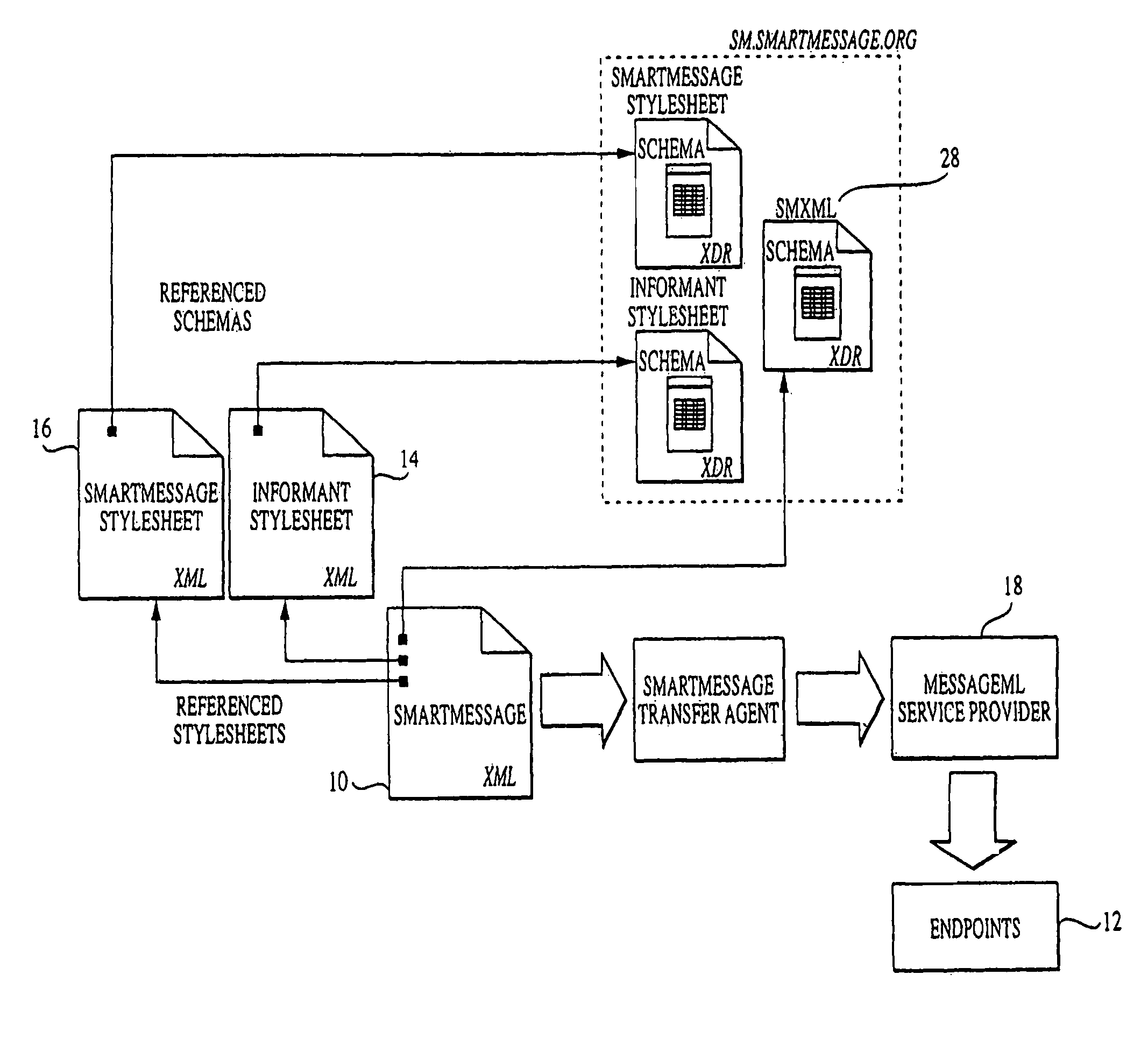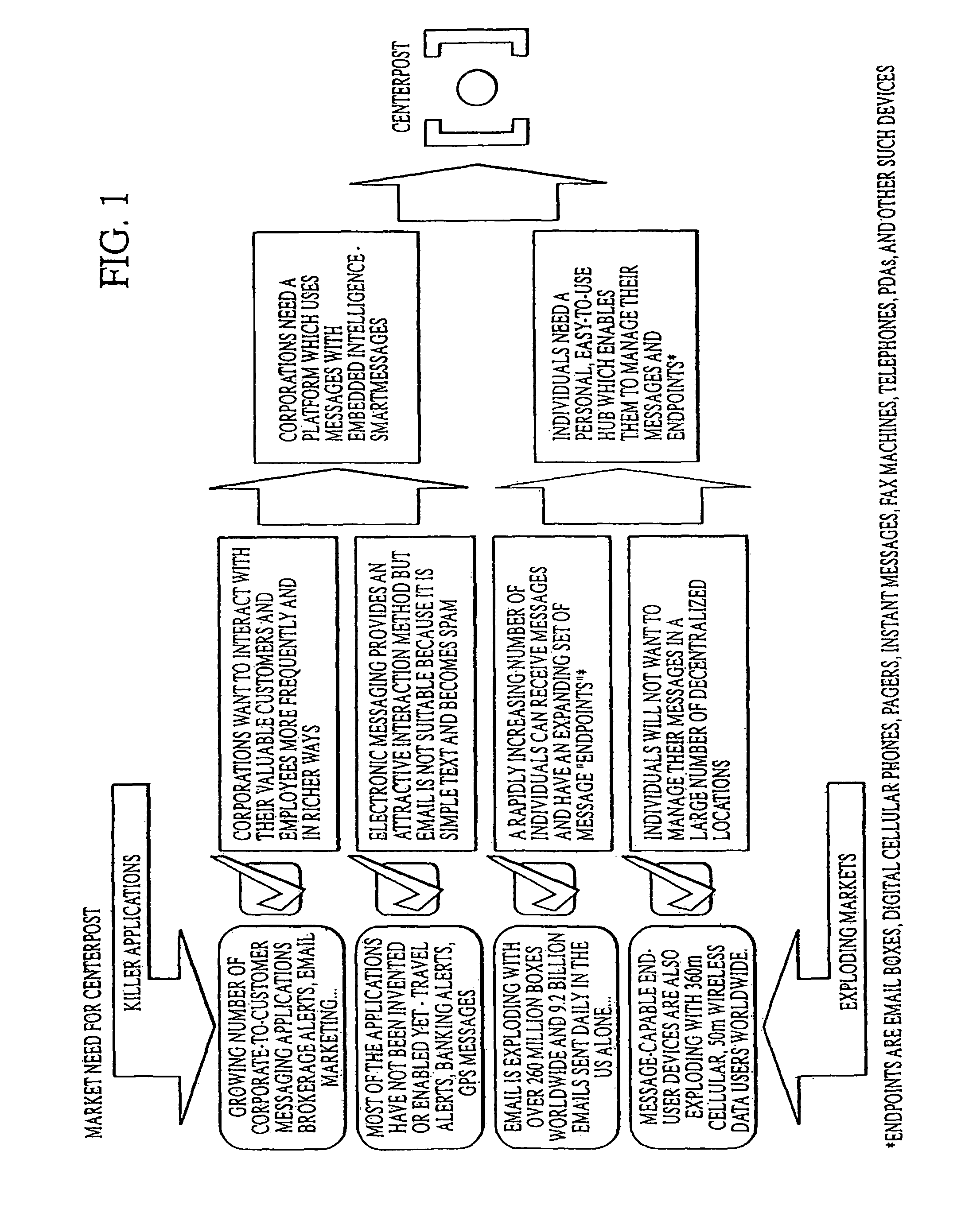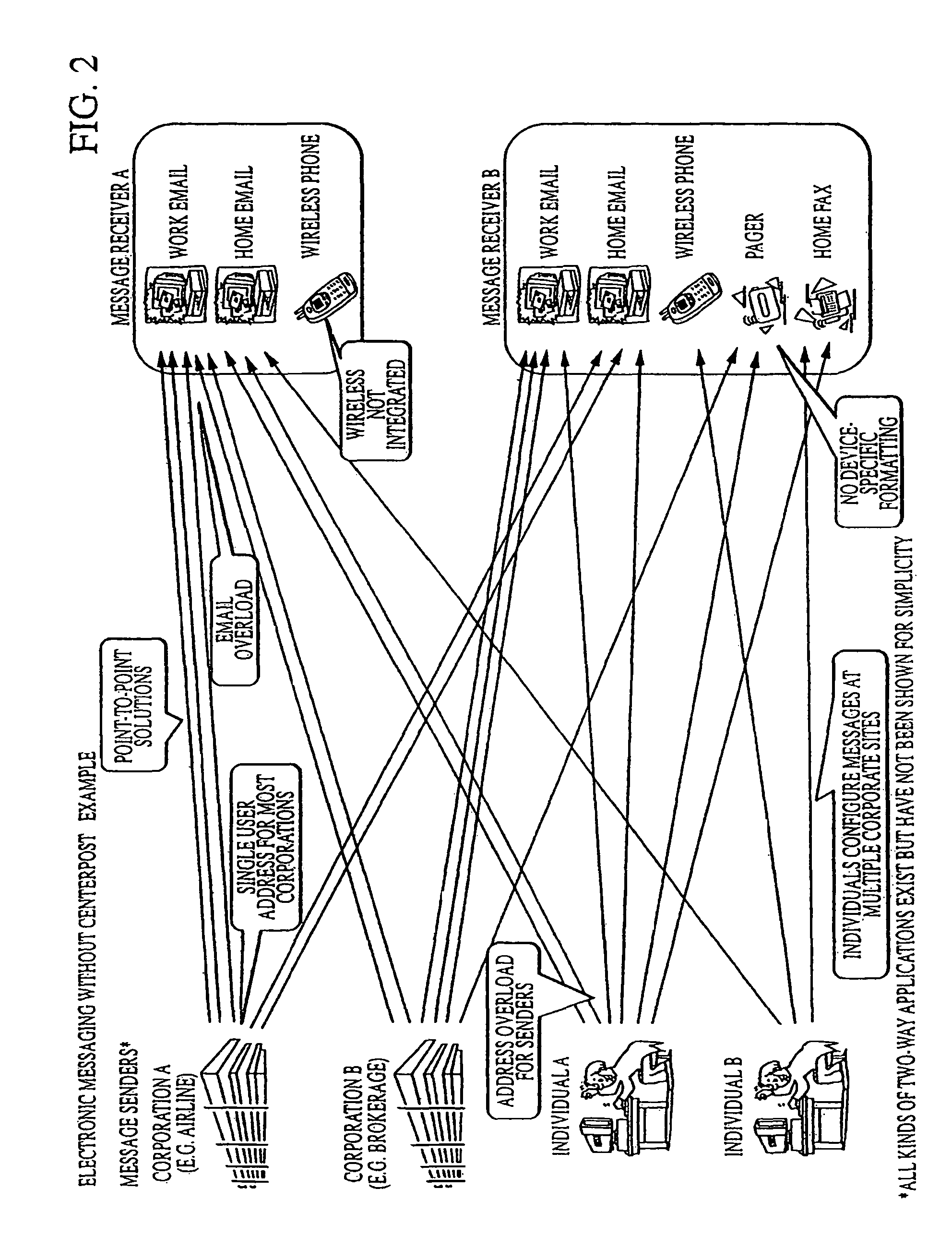Method and system for content driven electronic messaging
a technology of electronic messaging and content, applied in the field of electronic messaging system, can solve the problems of exploding electronic communication complexity, huge electronic communication market, and growing very rapidly, and internet appliances are expected to explode to 55 million connected devices
- Summary
- Abstract
- Description
- Claims
- Application Information
AI Technical Summary
Benefits of technology
Problems solved by technology
Method used
Image
Examples
Embodiment Construction
[0040]The novel electronic messaging system or MessageML system is a new type of electronic messaging. It provides a configuration whereby message content contains information that drives how the message is processed. This means that even before a user reads a message, it has been prioritized, formatted, and routed to a pre-defined communications device or application. The sender of the message creates the actual content of the message and, using the MessageML vocabulary, tags the content with meaning to enable intelligent processing of the message based on the meaning of the content. MessageML tags can be used to define message attributes, associate multiple messages with each other, allow precise message formatting, enable the definition and publishing of message classes, define possible responses and how a reply should be delivered, enable and / or disable specific endpoint types, provide a security layer, pre-configure users and endpoints, extensibly tag raw content, define styles...
PUM
 Login to View More
Login to View More Abstract
Description
Claims
Application Information
 Login to View More
Login to View More - R&D
- Intellectual Property
- Life Sciences
- Materials
- Tech Scout
- Unparalleled Data Quality
- Higher Quality Content
- 60% Fewer Hallucinations
Browse by: Latest US Patents, China's latest patents, Technical Efficacy Thesaurus, Application Domain, Technology Topic, Popular Technical Reports.
© 2025 PatSnap. All rights reserved.Legal|Privacy policy|Modern Slavery Act Transparency Statement|Sitemap|About US| Contact US: help@patsnap.com



